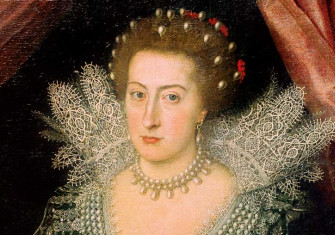James I: A Foreign King on the English Throne
Following his accession, the majority of James I’s new English subjects accepted their Scottish king with ‘comforte and contentmente’. Such sentiments would not last.

Around midnight on Saturday 26 March 1603 James VI was called from his bed at Holyrood Palace to receive an unexpected visitor. A dirty and dishevelled Sir Robert Carey had just arrived from London with news of Elizabeth I’s death. Kneeling before James, Carey ‘saluted him by his title’ of King of England, Scotland, France and Ireland and handed over a sapphire ring ‘from a faire lady’. Contrary to common belief, this ring had not belonged to Elizabeth, prised from her corpse’s finger, but was one that James had previously given to Carey’s sister, Philadelphia, Lady Scrope, with instructions that she should return it immediately upon the queen’s death. Carey hoped the ring would give James ‘assurance of the truth’ of his message for he had sped north against the express orders of Elizabeth’s privy councillors and carried with him no official documentation.







